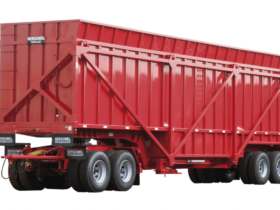In the contemporary world of advertising and branding, the quest for innovation and precision in sign making has led to the adoption of advanced technology. Among these developments, CNC sign making stands out as a transformative approach. This technology, particularly through the use of a CNC router for signs, has redefined the boundaries of creativity and efficiency in the sign-making industry. Let’s delve into how this technology is revolutionizing the signage world, making the creation of intricate and durable signs more accessible than ever before.
Introduction to CNC Technology in Sign Making
Computer Numerical Control (CNC) technology has been a game-changer in various manufacturing industries, and sign making is no exception. A sign making machine that utilizes CNC technology can automate the cutting and engraving process, allowing for precision that was once thought impossible. This not only enhances the quality of the signs produced but also significantly reduces the time and cost involved in their production.
The Versatility of CNC Routers
A CNC router for signs is remarkably versatile, capable of working with a wide range of materials including wood, metals, plastics, and foam. This versatility opens up a world of possibilities for sign makers, enabling them to cater to diverse client needs and preferences. Whether it’s creating large outdoor signs that can withstand the elements or intricate indoor signs that demand high levels of detail, CNC routers are up to the task.
Enhancing Creativity and Efficiency
One of the most significant advantages of CNC sign making is the freedom it offers designers. With traditional methods, complex designs could often be too time-consuming or difficult to produce. CNC technology eliminates these barriers, allowing for intricate patterns, sharp corners, and precise lettering to be created with ease. Additionally, the efficiency of CNC routers means that sign makers can take on more projects, increasing productivity and profitability.
The Process of CNC Sign Making
The process begins with a design, which is usually created using specialized software. This design is then sent to the sign making machine, where it is translated into precise instructions for the router. The machine then meticulously cuts and engraves the chosen material, following the design to the letter. The result is a sign that is not only accurate to the original design but also exhibits a level of detail and finish that sets it apart from traditionally made signs.
Customization at Its Best
CNC routers offer unparalleled customization options. Since the design is created digitally, it can be tweaked and adjusted with ease until it meets the client’s exact specifications. This level of customization is particularly beneficial for businesses looking to make a strong branding statement. It ensures that their signage is unique and perfectly aligned with their brand identity.
Conclusion: The Future of Sign Making
The integration of CNC technology into the sign-making process is more than just a trend; it’s a shift towards higher quality, efficiency, and creativity. As technology continues to evolve, we can only expect CNC sign making to become even more sophisticated, offering even greater possibilities for customization and innovation. Whether you’re a business owner looking to make your brand stand out or a sign maker seeking to enhance your offerings, the power of a CNC router for signs is undeniable. Embracing this technology is not just about keeping up with the competition; it’s about setting new standards and pushing the boundaries of what’s possible in sign making.







